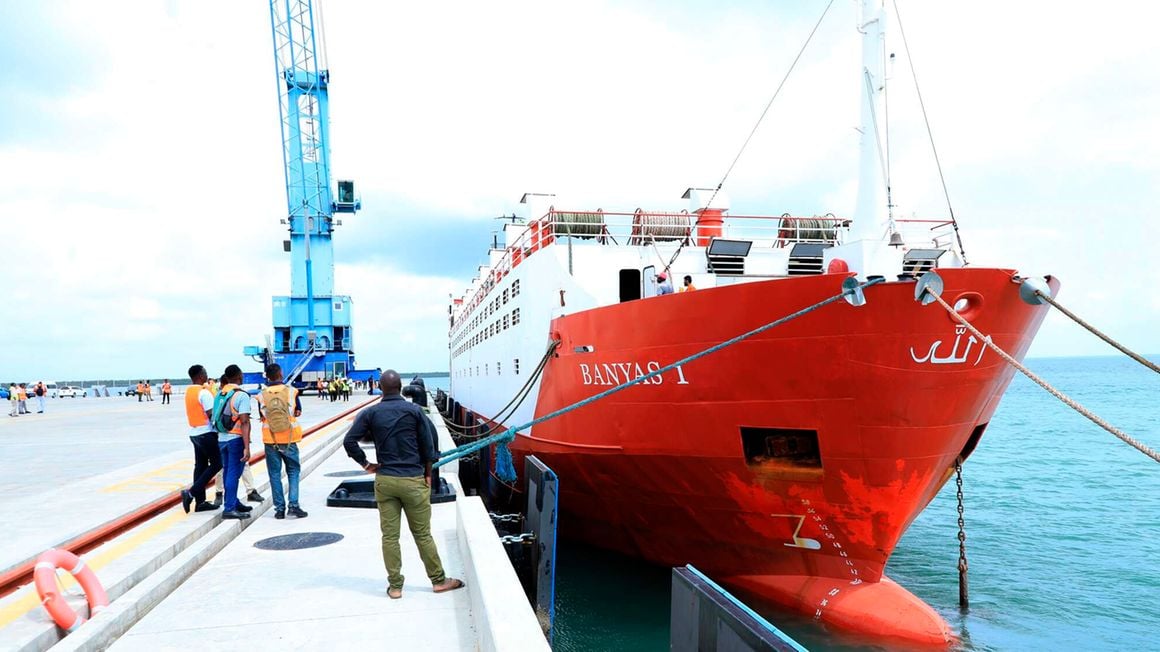
Our Projects are
Transforming African Trade
Quick Contacts
2nd Floor, Fidelity Insurance Centre Waiyaki Way, Westlands

The interest by Ethiopia and Uganda in importing goods through Lamu could be the lifeline that the largely moribund port needs even as it continues to register growth in business.
Last week Ethiopia received the first shipment of 60,000 tonnes of fertiliser imported through the Port of Lamu from Morocco.
And this week Uganda signalled an interest in using the Lamu port in a move that would see it expand trade with Somalia.
Kenya’s Roads and Transport Cabinet Secretary Kipchumba Murkomen toured the port on Wednesday and said it is strategically positioned to be the port of call for goods destined for northern Kenya, Ethiopia, and South Sudan.
“That’s why we will do all in our power to facilitate the shipment of goods, including the 60,000-tonne fertiliser cargo destined for Ethiopia, in spite of a damaged section of the Lamu-Witu-Garsen road due to floods.”
This is the first time Ethiopia is importing cargo through Lamu Port since its operationalisation three years ago.
In 2022, the port handled 6,539 metric tonnes of cargo, a figure that jumped to 37,576 metric tonnes in 2023.
Container traffic has also seen a rise, with twenty-foot equivalent units increasing from 382 in 2022 to 1,779 in 2023.
Ethiopian cargo is handled through Mombasa, which is expensive. Despite its higher operational costs compared to Djibouti, Mombasa in the past two years benefited from Ethiopian freight cargo volumes increasing from 6,915 metric tonnes in 2022 to 14,383 metric tonnes last year due to its relative stability and efficiency.
The Mombasa route has particularly benefited industrial hubs such as Hawassa, Bole Lemi, Debre Berhan, and Adama, where manufacturers heavily rely on imports of raw materials and exports of finished goods. But, with Lamu, Ethiopia will cut the cost of transportation due to its proximity, compared with Mombasa port.
But, even as Kenya celebrated the newfound business, the extent of challenges on the route were exposed while receiving the first transit consignment to Ethiopia after trucks carrying fertiliser were stuck for several days en route upcountry due to the flooded section in Gamba, Tana River County, on the Lamu-Garsen highway. The section has also in the past seen attacks by suspected al-Shabaab militants.
Mr Murkomen said Kenya would conduct a survey to put up the right infrastructure to avert such delays in the future. “The damaged roads have made it difficult to move goods out of Lamu port at a time the port is beginning to receive goods destined to Ethiopia,” the minister noted.
On Thursday, President Yoweri Museveni and his host William Ruto signed a tripartite agreement that paves the way for the Uganda National Oil Company to import petroleum products through the port of Mombasa.
President Museveni said his government was ready to trade and called on EAC partner states to remove non-tariff barriers that impede trade.
“NTBs are hurting the East African region at large. That’s why we have the Customs Union and the Common Market as is key in stimulating East African Community trade,” the Ugandan leader said. “We’re here to implement what we missed in the 1960s,when the formation of East African federation was mooted.”
Kenya and Uganda agreed to jointly extend the oil pipeline from Eldoret to Uganda, in a deal that will see Kampala directly import refined petroleum products through Nairobi. The extension, Nairobi said, will facilitate trade ties between the two nations.
At the same time, both nations agreed to extend the standard gauge railway (SGR) to Kampala through to DRC “as an efficient and sustainable Infrastructural artery for the transportation of goods.”
Kenya has been encouraging its neighbours, especially Ethiopia, to use the Lamu port by offering reduced port fees. Nairobi has offered to waive fees and give more time for free storage at Lamu in order to make overall shipping costs cheaper for Ethiopian traders.
It is also allocating Addis Ababa a five-acre land to develop warehouses and depots for its future use.
Last month, Kenya and Ethiopia resolved to address key NTBs that have impeded the full use of the Lapsset corridor.
The two countries concluded a strategic framework to promote bilateral cooperation in key areas of economic and social development as the Joint Technical Committee meeting also seeks to remove unnecessary checkpoints, harmonise axle loads between the two countries, harmonise customs protocols and systems as well as strengthen the Moyale one-stop border post.
Read original article
Disclaimer: The views and opinions expressed in this article are those of the authors and do not necessarily reflect the official policy or position of TradeMark Africa.